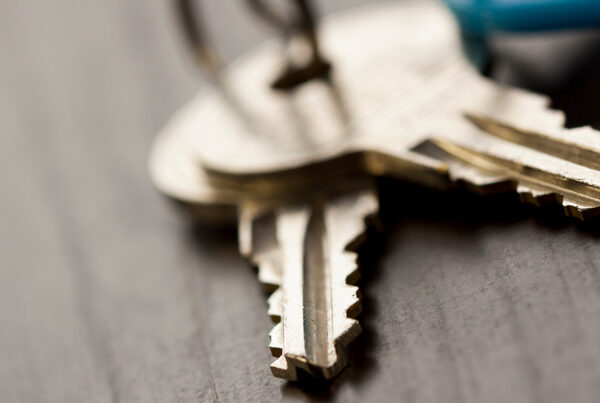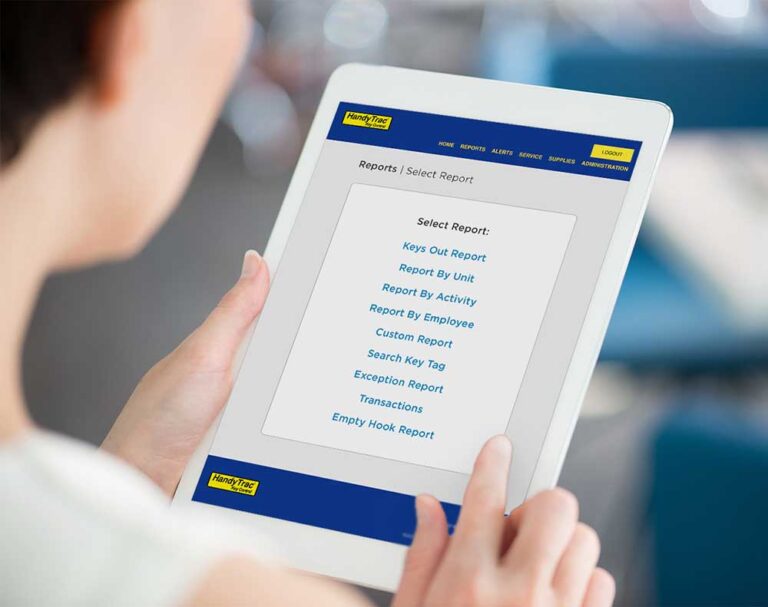In any building or multifamily community, the greatest potential security vulnerability is not necessarily your lighting, security cameras, parking lots or property entrances, it’s actually something much smaller; something you can hold in your hand. Your greatest security risk is the mismanagement or misuse of property keys. This is why training your property staff in key control best practices is a critical part of keeping your property and your residents safe.
Why Are Your Keys a Security Risk?
 The bigger your property, the more units you have, the more staff you have, and the more keys you must keep track of. Every key made increases the potential risk. Why? Simple: A key implies permission to enter. Keys leave no evidence of a break-in. Someone who obtains a key without permission can enter a unit, violate or steal at will and without warning, putting your tenants at risk and making you potentially liable for harm or damage.
The bigger your property, the more units you have, the more staff you have, and the more keys you must keep track of. Every key made increases the potential risk. Why? Simple: A key implies permission to enter. Keys leave no evidence of a break-in. Someone who obtains a key without permission can enter a unit, violate or steal at will and without warning, putting your tenants at risk and making you potentially liable for harm or damage.
The good news is that guarding, managing and controlling your keys by a set of key control best practices will greatly reduce this risk. It takes a few extra steps and a bit of training, but in the long run the entire property will operate a lot more safely.
Tips for Training Your Employees in Key Control
Once you’ve established your priorities and practices for key control, how do you train your employees in the process? Here are a few tips to help out.
Emphasize the importance of key control.
Everyone on your staff today, and everyone you hire in the future, should understand that key control is a top priority for your property. Emphasize that these best practices are for their protection as well as yours.
Keep the process consistent.
Once you have the system in place, make as few changes to the process as possible, with possible exception of completely revamping it for security reasons. Every time you change the procedure, you’ll have to retrain your employees.
Make the process as simple and straightforward as possible.
This may seem a little paradoxical considering that a secure system requires multiple steps, but if those steps make sense to your employees, they will memorize the process quickly, and it will become second nature through repetition.
What Are Some Key Control Best Practices?
Let’s look at a few common-sense ways you can streamline key control for your property:
1. Generate as few keys per unit as possible.
Remember, every key made increases potential risk, so the fewer keys you have in circulation, the better. Beyond the set of keys presented to your tenants, we recommend creating the fewest number of keys per unit required for you to operate efficiently.
2. Store and secure all keys in a central access location.
Having a centralized system helps you track keys more accurately and store them more securely. It also helps employees know at all times where to get keys, and makes you better able to watch keys go in and out. If your complex is too large to have a single access point for keys, you might want to set up several access points throughout the facility in a way that makes sense. However many access points you create, make sure you have a system in place that effectively tracks all activity at each point
3. Create a multi-step access system.
Obtaining a key should never be as simple as opening a locked box and pulling out a set of keys. A secure system should always involve a number of steps in sequence—for example, an employee may have to scan his badge, input a PIN code and identify an apartment number and reason code before the box will open. Establishing this set of steps may feel cumbersome at first, but once your employees are trained, it quickly becomes second nature.
4. Set up an audit trail.
Every time a key is checked out and checked in, you should have a record of it. You should be able to tell who checked out which key, at what time, and for what purpose. This detailed documentation makes it easy to show compliance with existing protocols as well as identifying and correcting discrepancies. It also keeps your employees accountable.
5. Implement a computerized system that easily integrates the above steps.
At HandyTrac, we’ve designed a key control system that helps you catalog your keys and store them in a central, secure access point, accessible through a secure set of steps. The system automatically tracks and documents each in-and-out transaction and generates a set of easy-to-read reports on demand. Once you’ve trained your property staff to use the system, key control becomes far less stressful and far more secure.
HandyTrac is committed to helping multifamily properties maintain a safe environment for tenants and employees alike.
For more information on key control best practices and the solutions we’ve devised to help you, call us today at 1-800-665-9994 or email sales@handytrac.com.




